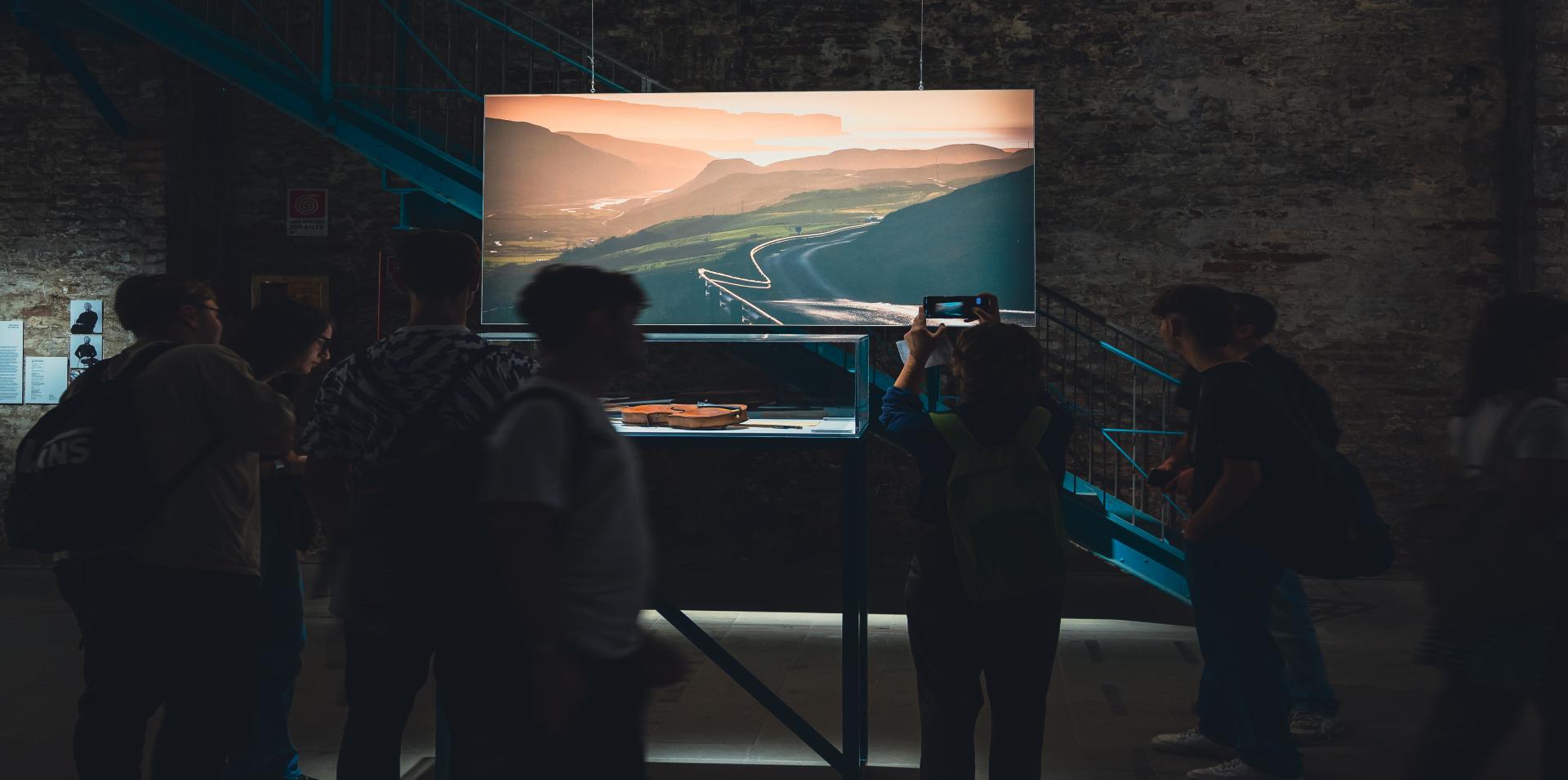Dualchas Director Rory Flyn reflects on our participation in the 18th Venice Architecture Biennale.
Venice delights the senses.
Arriving by water across the lagoon; slowing to enter the intricate network of canals; drifting past palazzi and chiese; and embarking on a worn stone quay. To explore by foot, traversing narrow lanes, crossing piazze and stepped bridges, means being constantly engaged by framed vistas, chatter from passing boats, and the soft pink light. All this encourages a meditative appreciation of the city’s history, structure, textures, sounds and smells.
The otherworldliness of Venice makes it the perfect place to reflect on the outside world and our response to it, and it has been home to an Art Biennale since 1895. Festivals of music, cinema and theatre followed, and since 1980 the Architecture Biennale has shared the halls of the Arsenale and the purpose-built pavilions of the Giardini with the Arts Biennale on alternate years.
Dualchas were invited to take part in 18th Architecture Biennale by Curator Lesley Lokko, as part of the main exhibition. She is a Scots-Ghanaian writer and teacher of architecture, culture and racial identity, and the Founder of the African Futures Institute. Her mother’s family was from the Hebrides, and she wanted a Scottish presence in her Biennale, The Laboratory of the Future.
Her agenda was to invite younger, more diverse voices than at previous Biennale, to reflect on the issues that surround and influence architecture and explore the boundaries between architecture and context. The main themes were decolonisation and decarbonisation.
Our response was to make an immersive installation that reflects on our context and practise, and the powerful influence that landscape, language and history have on our work. In many developing countries people look to architecture from outside, rather than being inspired by their own culture. We are inspired by where our families are from and by the traditional building forms of the Highlands. We wanted to communicate a story of optimism and strength.
To deliver on this ambition required collaborators that could help us capture a story and an atmosphere. A creative team, based mostly in our isles was enlisted: Pete Marsden, director; Cal Flyn, writer; Hector McInnes, sound artist; Jordan Young, photographer; and Peter McCaughey, technical advisor.
Together we created a large-scale audio-visual installation, filling a prominent central bay in the cavernous Corderie dell’Arsenale. Four 5.2m wide screens sit squarely between four columns, forming a space with a discreet speaker in each corner. Our film, entitled Dualchas, tells a very personal story of our connection to Skye. Our buildings are featured subtly, as an integral part of a story that looks at the need to appreciate and nurture culture.
At the opening night reception on the rooftop of the Biennale’s own Pallazzo on the Grand Canal, the common phrase amongst invitees was - “We can’t believe we’re here”. This succinctly demonstrates Lesley Lokko’s achievement in bringing together and providing a platform for new voices.
Our invitation gave us the opportunity to not only be observers, but active participants in the life of this sensual city.
[This article was featured in the RIAS Quarterly Issue 55, Autumn 2023: Outwith Our Shores]

